At the request of Bill McBride here is Delamere Forest:

Delamere Forest is a course I could never tire of playing. It’s a Fowler layout originally from 1910 but later altered by him. Although it has the word Forest in its title, trees are rarely a part of the architecture. In fact in the days of steam the old engines (aged engines were sent here to die) which plied the Cheshire Lines railway alongside the course frequently produced enough sparks to set fire to the vegetation. The value of the course in terms of the mineral rights of the land must be considerable – you can see how close the present day quarrying is. Delamere is a small club (400 members) and they do not accept visiting societies, so as a casual visitor you can almost always turn up and play, weekends included. Considering the quality of the course the green fee is modest.
http://www.delameregolf.co.uk/indexx.htmlI’ll share with you one or two of the better courses in my part of the country.
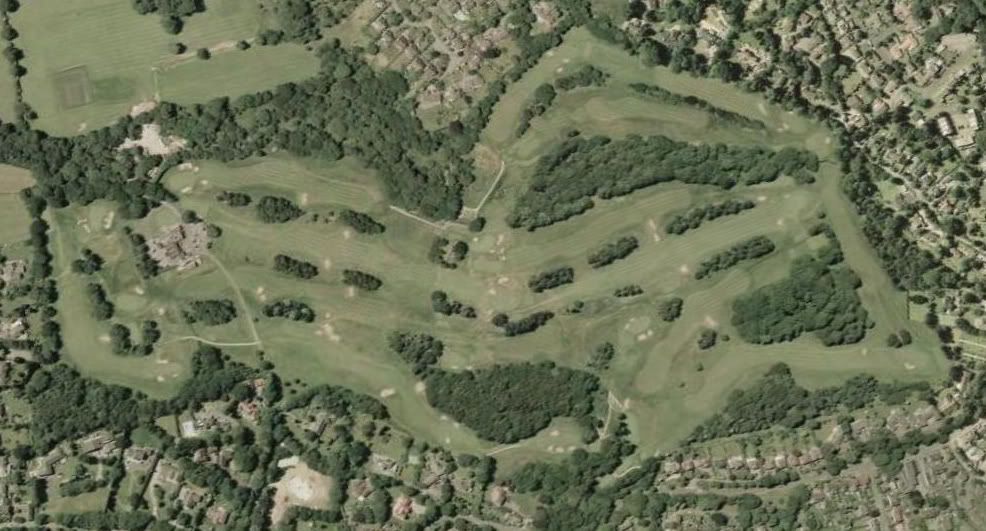
Prestbury is a fine Colt course dating from 1920. If you play here make sure you seek out the course manager. He’s a real Colt enthusiast, having previously worked at Wentworth, and has a valuable collection of drawings. The aerial gives no indication of the undulating nature of the ground, which is at its most brutal on the 9th hole, a lengthy par 4 which climbs steeply over the last half of the fairway.
http://www.prestburygolfclub.com/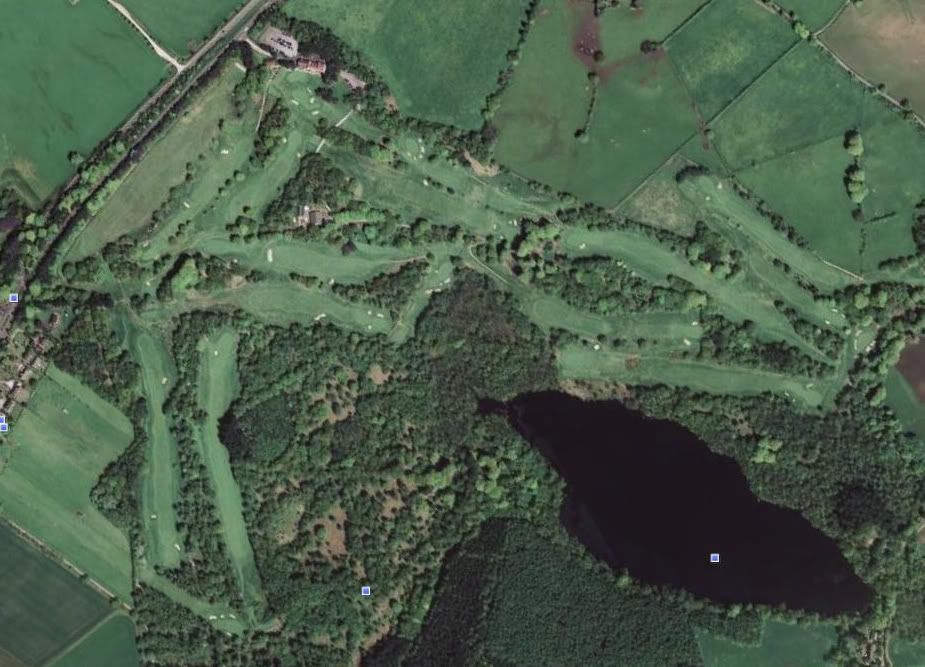
Sandiway is probably the hardest of the Cheshire courses on which to play to your handicap (apart from Royal Liverpool) and certainly those professionals who play it regularly rate it highly. It has one of the most inviting opening holes I know, driving from a high-ground tee to a gently rising fairway far below. The toughest holes are undoubtedly the 10th, 12th and 14th especially when played from the back tees. Ted Ray and Colt are the named architects, although some alterations were made when the Northwich by-pass was built.
http://www.sandiwaygolf.co.uk/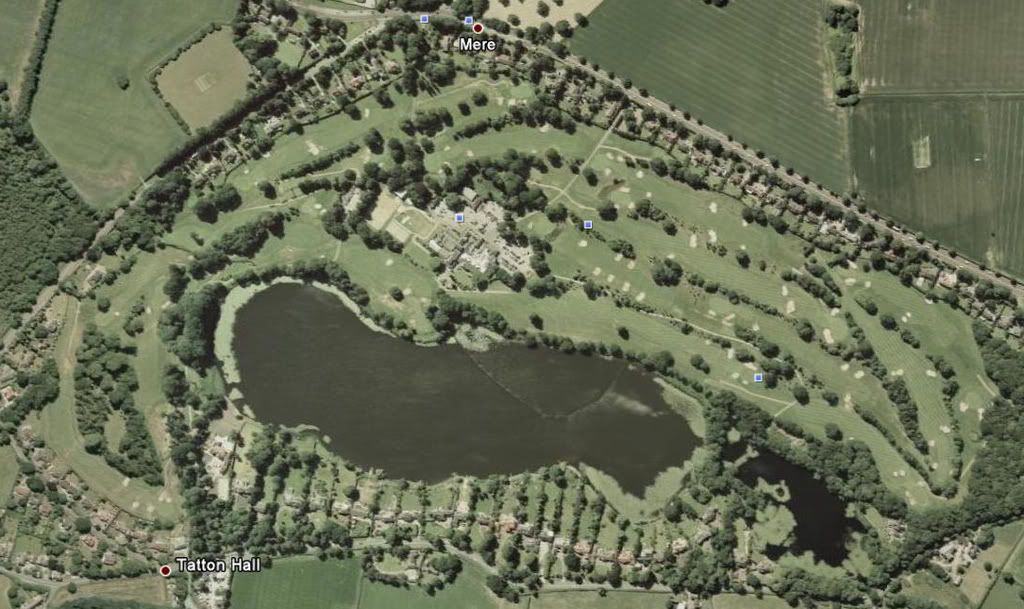
Mere is unique in this part of the country in being a country club. It was established in the 1930s and the course was laid out by James Braid. How much influence George Duncan had (he was the inaugural professional) is not known, but he is credited with being involved in contemporary newspaper accounts. Braid returned to realign a short hole (14th) and otherwise the only change has been to move the 18th green from close to the clubhouse to the edge of the Mere to provide a spectacular finish. The early holes are mostly flat, but from the 15th to the end the golf is of a very high order. Maintenance is exemplary. Interestingly many of the bunkers in this aerial are big ones made out of two or more Braid bunkers. Some of them are now being divided up to make several smaller ones. Mere has hosted some big professional events in the past with a roster of big name winners from Fred Daly to Nick Faldo and Ernie Els.
http://www.meregolf.co.uk/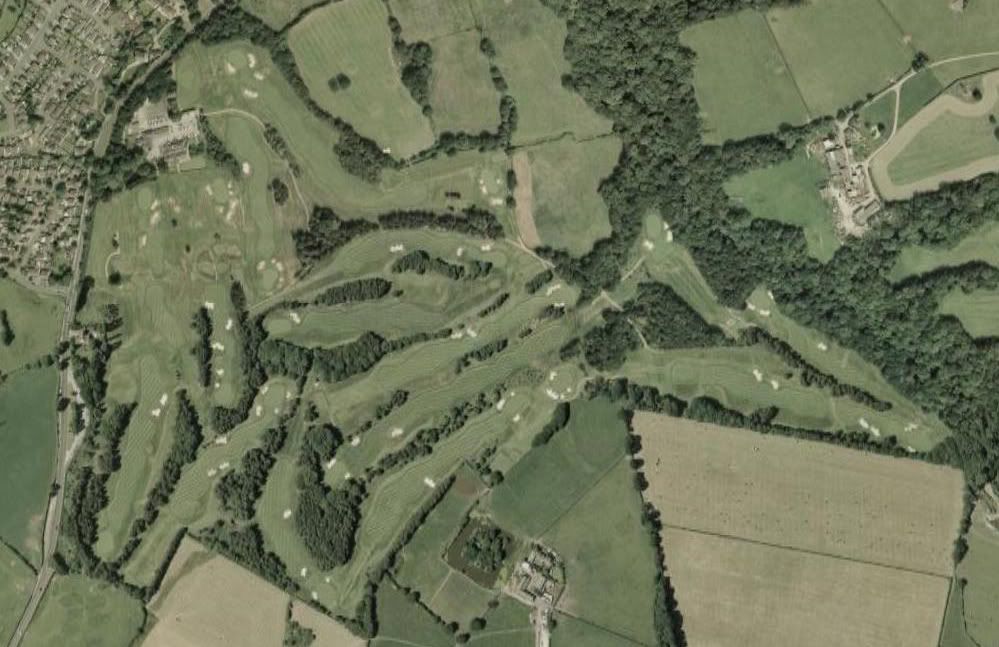
Stockport is one of the friendliest clubs around. It was designed by Sandy Herd and built by the club’s first professional Peter Barrie. He lavished a great deal of attention to the detail of construction and the approaches to the greens are evidence of this, if you still play running shots. One hole, the 3rd, was altered by Braid at about the same time that he laid out Mere. Otherwise, the only alterations are to the bunkering – Hawtree relatively recently – although there is a new 11th hole which I have not yet seen.
http://www.stockportgolf.co.uk/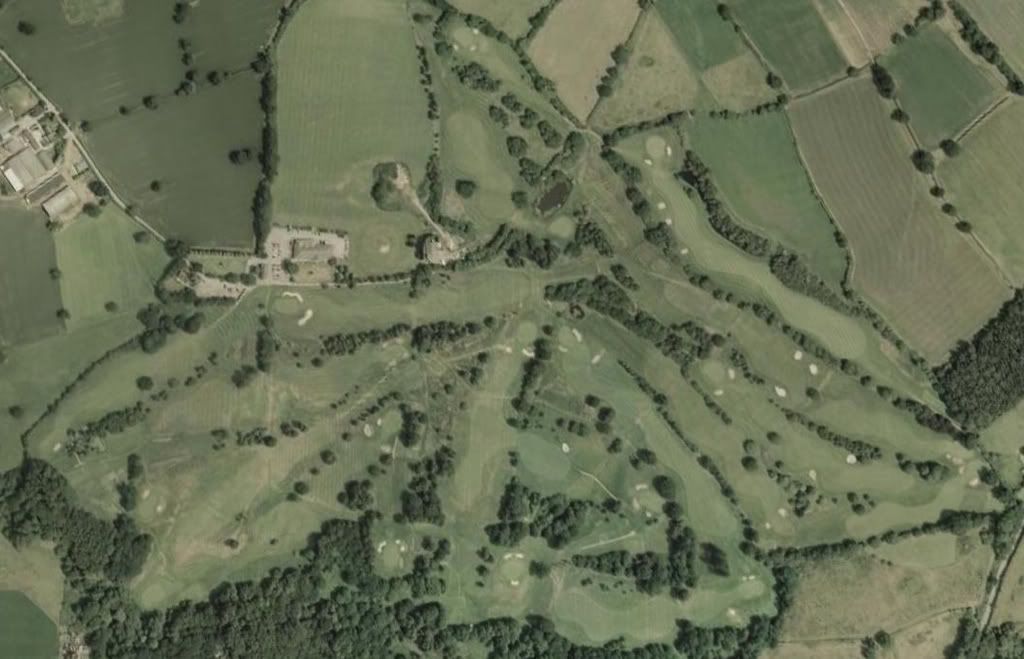
For many years central and southern Cheshire had little in the way of golf provision. This was agricultural land, excellent for raising cattle and providing milk for Cheshire Cheese, but not for growing the sort of grasses preferred by golfers. The only early course of note was Crewe, a few miles outside the town famous as a major railway junction and former railway works. I do not know its provenance and have played the course only once but it is attractively rural and has a number of excellent two-shot holes. It has produced some internationally famous amateur golfers, not least the venerable Roy Smethurst.
http://www.crewegolfclub.co.uk/
In the insalubrious suburbs of Stockport is a really characterful MacKenzie course which is reasonably intact. The 10th green is said to be the first so-called MacKenzie green and the 13th is one of the most impossibly difficult par 4s I have ever encountered! Even the early holes on high ground by the clubhouse have a great deal more interest than the ground suggests – MacKenzie at his deceptive best! The 18th is a bit of a thrombosis hill, but never miss an opportunity to play it. The staff and members are warmly welcoming to visitors.
http://www.rvgc.co.uk/
There are also four part-MacKenzie courses left in Cheshire. This one, Bramall Park, is thought to have brought in James Braid in the 1930s to undo what was deemed to be excessive difficulties in MacKenzie’s 1920 design. I was a member here for a few years. It grows lush grass which makes for destructive rough! Bramall Park is close to Bramall Hall in the village of Bramhall where there is also a (most agreeable) Bramhall Golf Club. Take care with the spellings!
http://www.bramallparkgolfclub.co.uk/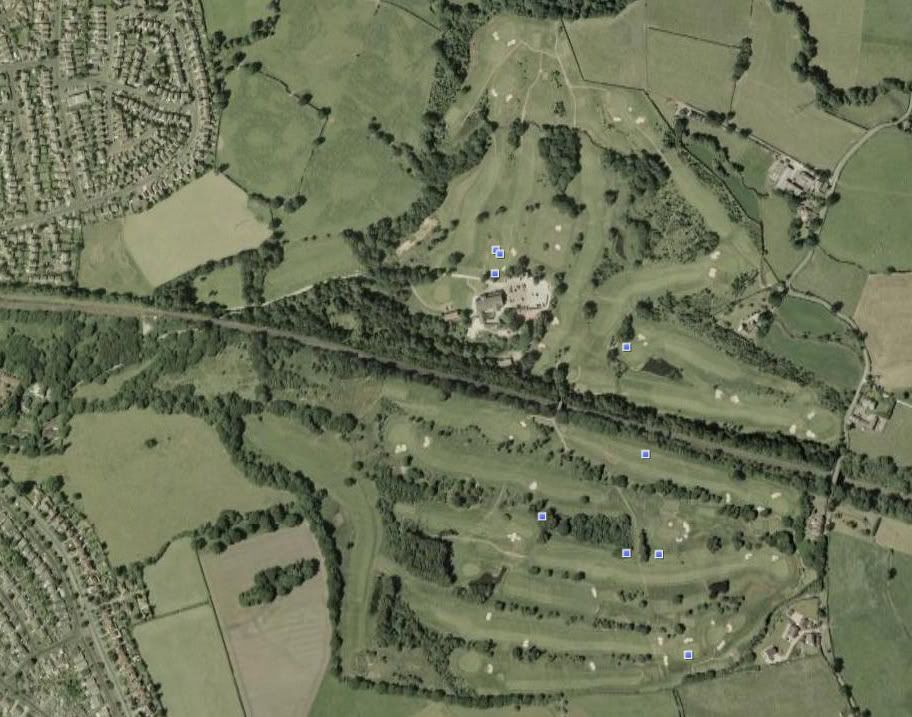
Hazel Grove is perhaps the saddest case in that some of MacKenzie’s course was compulsorily purchased for the building of a new road which never came into being. Among the lost holes was a particularly renowned 17th, Spion Kop. New land was available for a rearrangement of the course and additional holes were designed by Tom Macauley. I was told that the club wanted to re-purchase the old land but was not allowed to. Maybe one day the lost holes can be reinstated.
http://www.hazelgrovegolfclub.com/
Didsbury is another old MacKenzie course which suffered at the hands of the road builders. When the M60 Manchester ring road was built it passed straight through MacKenzie’s course. Peter Alliss and David Thomas were called in to rearrange what was left. It is not their fault that five holes are isolated from the rest of the course on the far side of the motorway next to a vast rubbish collecting dump! The holes in the top right of the picture are on neighbouring Northenden GC.
http://www.didsburygolfclub.com/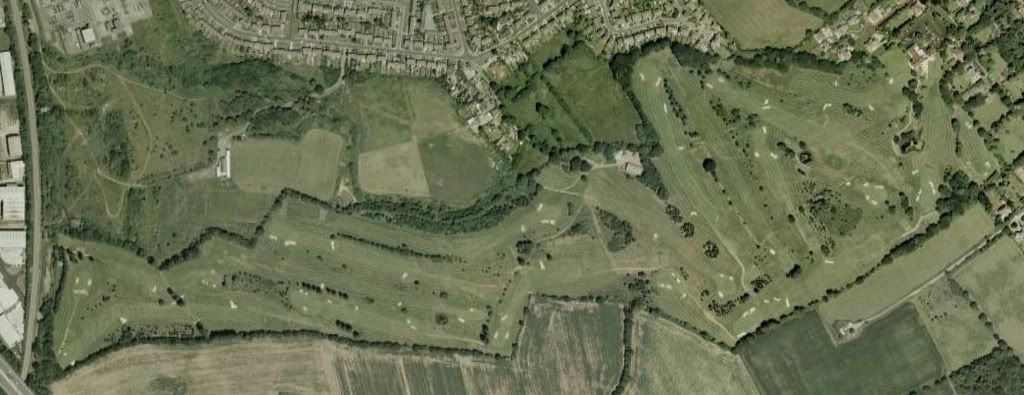
Prenton, on the Wirral, is the other part-MacKenzie course in what I still call Cheshire, although bureaucrats have deemed that this is now called Merseyside. How much of MacKenzie’s layout survives I cannot say, but I think it is probably quite a lot. MacKenzie apparently restored the course after the First World War. Hawtrees made alterations in 1978, including a completely new 18th hole, which has a notably mischievous green. Interestingly the outward half is par 36, the inward half par 35 but the back nine is about 300 yards longer than the front nine.
http://www.prentongolfclub.co.uk/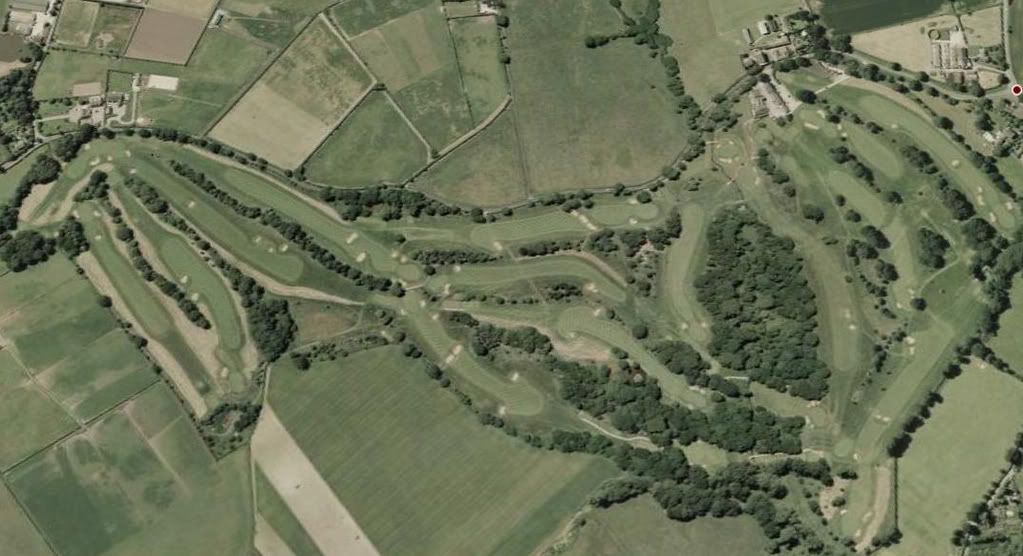
Finally, Wilmslow. It is my home club which dates back to 1889. It moved to its present site in 1903 and the course has been developed by a long list of architects: Herd, Braid, Simpson, Duncan, Fred Hawtree, Cotton, Pennink, Lawrie, David Thomas. I am pleased that they have retained some cross bunkers. While they are of no concern to the big hitters of today they are perfectly placed for my very average sort of golf. It is one of the best conditioned courses in Cheshire, a regular venue for county events and has been a host to European Tour events and Open Championship regional qualifying.
Obviously there are many more courses in this part of the world that I should like to share with you. Another day, perhaps.